Everyone has their opinions on what an all-time XI would look like, and the beauty of the exercise is that no-one is wrong.
However, a lot of these hypothetical teams don’t actually include players from all time – for instance, by having Matthew Hayden, Ricky Ponting, Shane Warne, Adam Gilchrist and Glenn McGrath all in an Australian XI.
To bring some truth to the term, I have created a playing XI for each Test-playing nation of significant experience – Australia, England, South Africa, New Zealand, West Indies, India and Pakistan.
For Australia and England I have selected one player from each of the following time periods: 1877-99, 1900-19, 1920-29, 1930-49, 1950-59, 1960-69, 1970-79, 1980-89, 1990-99, 2000-09 and 2010-19.
As the other nations began playing Test cricket later or were excluded due to apartheid, these cut-off periods are adjusted accordingly. For instance, the two-decade stretch of 1900-19 is split into 1900-09 and 1910-19 for South Africa, and the 2000s and 2010s are split into five-year blocks for New Zealand.
We’ll begin with the team that bowled the first ball in Test cricket: England. All teams are presented in batting order.
Leonard Hutton (captain) (1950-59)
38 Tests, 3183 runs at 56.83, one wicket at 52.00
Although by now Len Hutton was coming to the twilight of his career, having debuted in 1937 and having scored a record 364 against Australia the following year, he was still a formidable opening batsman who carried England through the first half of the 1950s. Averaging 88.83 in the 1950-51 Ashes series where the next best for England was Reg Simpson’s 38.77, his 62* on a Brisbane sticky wicket was considered a more meritorious innings than his Oval record.
In 1952 Hutton became England’s first professional captain and handled tearaway fast bowler Freddie Trueman deftly in his debut series. Regaining the Ashes in 1953 after 19 years in Australian hands, Hutton was responsible for rescuing a series against West Indies to a 2-2 draw by averaging 96.71 with the bat, and England retained the Ashes in 1954-55 in Australia with the help of another quick, Frank Tyson.
By now his powers were on the wane, and Hutton signed off after two more Tests in New Zealand before declining the offer to captain against South Africa in 1955 owing to ill health.
Honourable mentions (1950-59)
Peter May: 59 Tests, 4182 runs at 49.20.
Jim Laker: 38 Tests, 162 wickets at 18.46.
Alec Bedser: 28 Tests, 147 wickets at 19.84.

(Photo by Central Press/Hulton Archive/Getty Images)
Geoffrey Boycott (1970-79)
44 Tests, 3806 runs at 55.97
Obdurate and immovable at the best of times, Geoff Boycott viewed the crease as his birthright, and woe betide the bowler who tried to dislodge him from it. He did as much as anyone to win the Ashes in 1970-71 with an average of 93.85 before injuring his arm getting hit by a Graham McKenzie delivery and struggling as a result for some time.
In 1973 and 1974 Boycott averaged around 50 in three straight series before withdrawing himself from national availability for three years. Returning in the 1977 Ashes, he initially did not endear himself to the Nottingham crowd by running out local hero Derek Randall, but he scored a century to absolve his sins before going on to score his 100th first-class century in Headingley at the next match – or his 99th, if you believe Jonathan Agnew!
He continued to score heavily, averaging 82.25 against Pakistan in 1977-78, then 53.00 against New Zealand in 1978 and 75.60 against India in 1979 before his final innings of the 1970s saw him stranded on 99 not out when England lost three wickets for four runs in Perth to lose the Test. Boycott continued for a few years into the 1980s, finishing his career in India in 1982.
Honourable Mentions (1970-79)
Tony Greig: 58 Tests, 3599 runs at 40.43, 141 wickets at 32.20.
Alan Knott: 71 Tests, 3509 runs at 34.40, 181 catches, 11 stumpings.
Derek Underwood: 59 Tests, 202 wickets at 27.65.
Bob Willis: 51 Tests, 182 wickets at 24.78.
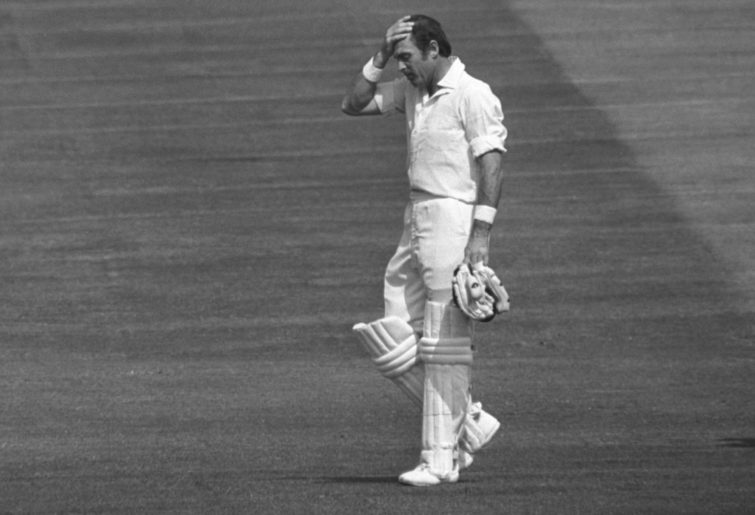
(S&G/PA Images via Getty Images)
Wally Hammond (1930-49)
68 Tests, 5560 runs at 56.16, 59 wickets at 38.20
Wally Hammond had the misfortune of batting in the shadow of Don Bradman through the 1930s and was always seen as the second-best of the era. With a voracious appetite for runs, he was a pure strokemaker who used his power well, particularly when driving. Hammond owns the highest series average of all time – the matter of a mere 563.00 against New Zealand in 1932-33, including a then-record 336 not out.
A few lean seasons followed, but from 1935 to 1939 Hammond never averaged less than 51.00 in a series, with highlights including an average of 194.50 against India in 1936 and 67.16 in the 1938 Ashes. Although he was past his best after the Second World War, he led the team against India in 1946 and Australia in 1946-47 in one last series against his old sparring partner Bradman before retiring.
Hammond was also a creditable bowler, good enough on occasion to take the new ball and hurry batters with his medium pacers and taking 5-57 at Adelaide in 1936-37. In his Wisden obituary he was bracketed as one of the four greatest batsmen the game had seen along with William Gilbert Grace, Jack Hobbs and Bradman.
Honourable Mentions (1930-49)
Len Hutton*: 41 Tests, 3788 runs at 56.53.
Denis Compton: 36 Tests, 3132 runs at 60.23, 50 wickets at 51.55.
Les Ames: 46 Tests, 2434 runs at 41.25, 72 catches, 23 stumpings.
Hedley Verity: 40 Tests, 669 runs at 20.90, 144 wickets at 24.37.
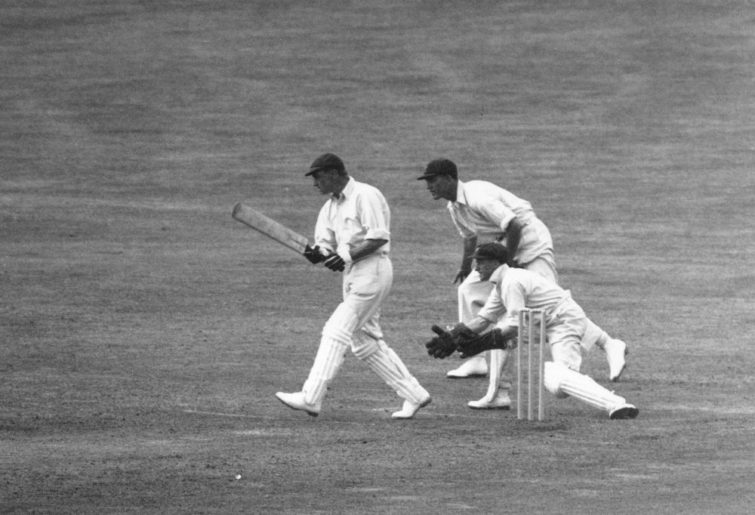
(Photo by Central Press/Getty Images)
Kevin Pietersen (2000-09)
56 Tests, 4799 runs at 49.98
From the moment he strode onto the Lord’s turf with England reeling at 3-18 and losing two more wickets when he had scored only two runs, Kevin Pietersen’s confidence and brashness shone through. With two half-centuries in that debut match – punctuated by three boundaries in as many balls from a rampant Glenn McGrath – and a series-defining 158 in the final match at the Oval, he began as he meant to go on, averaging over 50 in five of his first eight series and 49.57 in another.
In 2006 Pietersen became the first batter since Graham Gooch in 1990 to score three successive centuries in England, and he ascended to the captaincy after Michael Vaughan retired. It was an unhappy time due to conflicts with then-coach Peter Moores, and he was stripped of the role after only five months. Injury in 2009 slowed Pietersen somewhat, but he continued into the new decade with some career-defining knocks.
Honourable Mentions (2000-09)
Marcus Trescothick: 76 Tests, 5825 runs at 43.79.
Michael Vaughan: 80 Tests, 5631 runs at 42.02.
Andrew Strauss: 69 Tests, 5367 runs at 44.35.
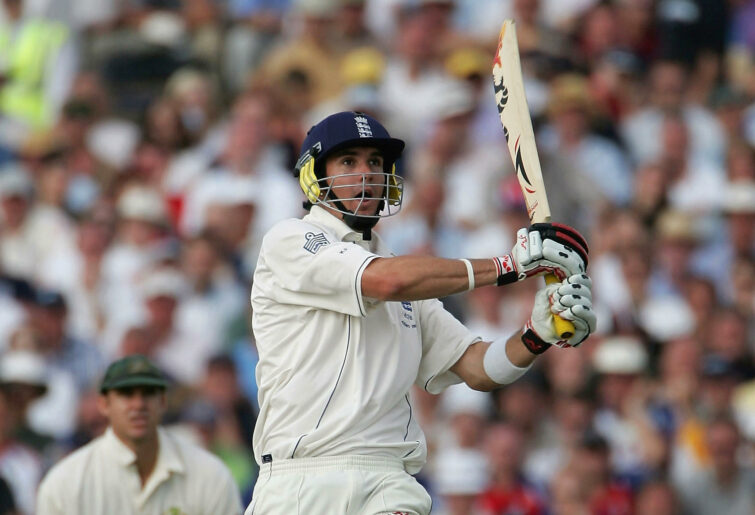
(Photo by Tom Shaw/Getty Images)
Alec Stewart (wicketkeeper) (1990-99)
93 Tests, 6407 runs at 40.80, 170 catches, eight stumpings
Early in his career, Alec Stewart duelled with Jack Russell for the wicketkeeping gloves, occasionally taking his place as a specialist batter with Russell in the same side regardless. Stronger against pace than spin, Stewart averaged 45.50 as an opening batter but acquitted himself well in the middle order as well, ending with the most runs of any player in the 1990s. His finest performance was in Bridgetown in 1994, scoring two centuries and inspiring an England win.
Rising to England captain in 1998, Stewart led the team to a win against South Africa but struggled in the following Ashes series and was dumped after the World Cup debacle on home soil. However, he continued on into the 2000s, scoring a century in his 100th Test and retiring as England’s most-capped cricketer.
Honourable Mentions (1990-99)
Mike Atherton: 91 Tests, 6217 runs at 38.37.
Graham Gooch: 45 Tests, 4176 runs at 51.55, 9 wickets at 49.66.
Angus Fraser: 43 Tests, 168 wickets at 26.86.

(Photo by Getty Images)
Ian Botham (1980-89)
75 Tests, 4051 runs at 33.75, 258 wickets at 32.39
No matter what else he did in the remaining eight years, Ian Botham’s feats in the space of a month in 1981 assured him of the spot for that decade’s representative. His 149* at Headingley, 5-11 at Birmingham and 118 at the Oval ripped the Ashes from Australia’s grasp and cemented a legend. Whether through powerful hitting or new-ball bowling at pace, Botham could not – would not – be kept out of a game.
His high score of 208 was scored at a strike rate of 92.03 against India in 1982, and he took 8-103 against the West Indies in 1984 but could not avert defeat. Towards the end of the decade Botham struggled, but he continued to save his best for the Aussies – he scored a blistering 138 in the 1986 Brisbane Test and took 5-41 in Melbourne.
Honourable Mentions (1980-89)
David Gower: 89 Tests, 6196 runs at 42.43.
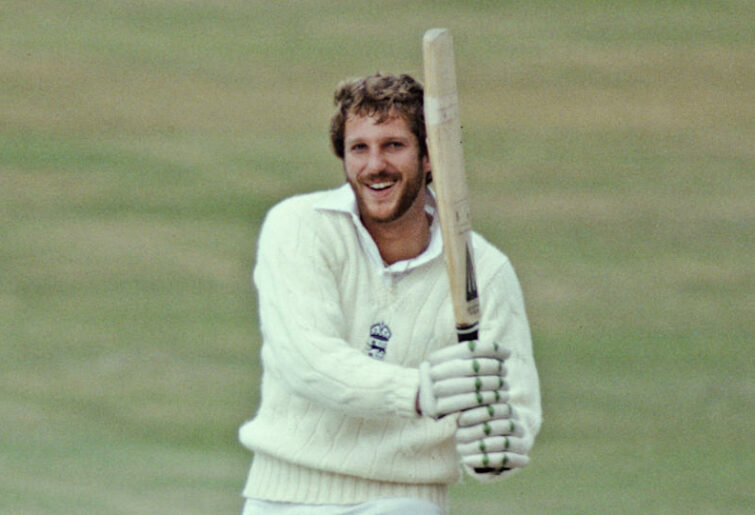
(Photo by Adrian Murrell/Allsport/Getty Images/Hulton Archive)
William Gilbert Grace (1877-99)
22 Tests, 1098 runs at 32.29, nine wickets at 26.22
The first true cricket superstar, WG Grace was known worldwide as ‘the Doctor’ and was responsible for the evolution of batting in the latter half of the 19th century by using footwork to meet the pitch of the ball. Grace’s first Test innings was 152 at the Oval – made as part of a famous wager with his good friend Billy Murdoch – and was bettered only by his 170 at Lord’s in 1886.
Grace’s canny slow-medium bowling was rarely used but was effective when it was. Throughout his career he was a major drawcard, and despite being dubbed an ‘amateur’, he frequently received appearance fees, testimonials et cetera at a far higher rate than the professional players of the day.
Retiring in 1899 after Charles Burgess Fry did not realise that Grace asking if Archie MacLaren would be recalled had the subtext of Grace himself dropping out of the side, he continued playing first-class cricket until 1908. He is the most revered figure in English cricket history.
Honourable Mentions (1877-99)
Arthur Shrewsbury: 23 Tests, 1277 runs at 35.47.
Kumar Shri Ranjitsinhji: 12 Tests, 970 runs at 53.88.
George Lohmann: 18 Tests, 112 wickets at 10.75.

(Photo by Hulton Archive/Getty Images)
Maurice Tate (1920-29)
26 Tests, 814 runs at 27.15, 118 wickets at 25.16
In 1902 Fred Tate was chosen for his only Test at Old Trafford. He dropped Australian captain Joe Darling and was the last man dismissed as England fell short by the runs. “I have got a boy at home who will put it all right for me,” he promised, and Maurice Tate did exactly that.
Starting his career as a slow bowler, Maurice changed to a faster pace in 1923 and in his Test debut the following year took 4-12 to help bowl South Africa out for 30. Capable of bowling all day, his batting was often overlooked, but he was good enough to score over 1000 runs in the English county season on eight occasions, and he scored a century against South Africa in 1929 after coming in at 5-117. This was Tate’s best year with the bat, averaging 42.85, while his efforts in the 1924-25 Ashes series, taking 38 wickets (a new record), won universal acclaim.
The emergence of the likes of Harold Larwood, George Allen, and Bill Voce in the early 1930s saw him lose effectiveness, and he retired in 1935.
Honourable Mentions (1920-29)
Jack Hobbs: 28 Tests, 2644 runs at 61.48.
Herbert Sutcliffe: 32 Tests, 2960 runs at 64.34.
Fred Trueman (1960-69)
36 Tests, 580 runs at 12.60, 179 wickets at 22.01
As a tearaway fast bowler in the 1950s, Fred Trueman reduced India to 4-0 on his debut and towards the end of the decade formed a fearsome tandem with Brian Statham. However, disciplinary issues often reared their head, and Trueman missed almost as many Tests as he played for crimes real and imagined. He never let up at the batsmen and had a sound control of swing, eventually becoming the first bowler in Test history to reach 300 wickets by tempting an edge from Neil Hawke at the Oval in 1964.
After his Test career was over, Trueman continued with Yorkshire, delighting in their successes and finishing his first-class career in 1968 before becoming an acerbic radio commentator for the BBC.
Honourable Mentions (1960-69)
Ken Barrington: 75 Tests, 6397 runs at 59.78, 24 wickets at 48.54.
Colin Cowdrey: 65 Tests, 4788 runs at 48.85.
Ted Dexter: 55 Tests, 4232 runs at 50.38, 60 wickets at 36.43.
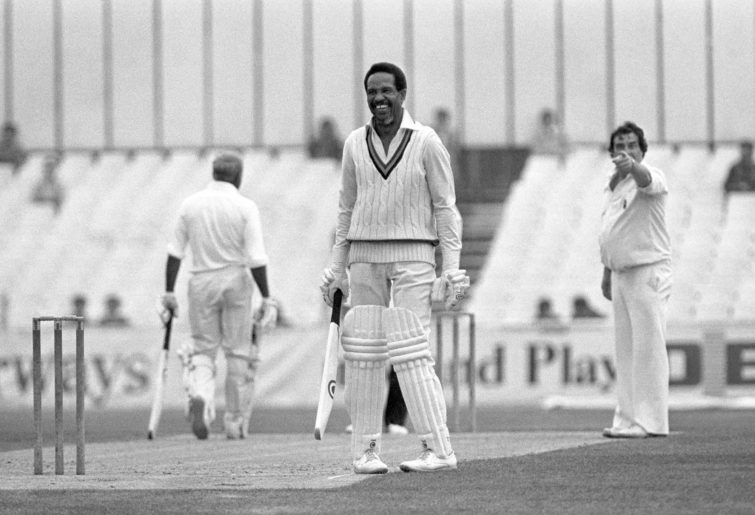
(Photo by S&G/PA Images via Getty Images)
Sydney Barnes (1900-19)
27 Tests, 242 runs at 8.06, 189 wickets at 16.43
No-one has taken more wickets per Test than Sydney Barnes’s seven, and he has long been considered one of the greatest bowlers of all time. With peerless control of seam and swing, he was considered more a fast spinner than a genuine quick, but in any case his peers unanimously considered him the greatest of the era.
His finest performances were 13-163 in only his second Test, 7-60 against Australia in 1908, 13-57 against South Africa at the Oval in 1912 and 49 wickets in his final series, including 17-159, the best Test match figures until Jim Laker’s 19-90 in 1956.
At the Sydney Test of 1911-12 captain Johnny Douglas did not give Barnes the new ball, and he seethed through an innings of 3-107. At the next match in Melbourne, Barnes took the new ball and promptly ripped the heart out of the Australian top order, with four wickets for one run in five overs.
Preferring the financial rewards of league cricket in his native Staffordshire to the drudgery of regular county matches, Barnes mellowed in old age but always garnered respect.
Honourable Mentions (1900-19)
Wilfred Rhodes: 44 Tests, 1947 runs at 33.56, 92 wickets at 24.71.
Jack Hobbs: 28 Tests. 2465 runs at 57.32.
Colin Blythe: 19 Tests, 100 wickets at 18.63.
James Anderson (2010-19)
106 Tests, 729 runs at 8.01, 429 wickets at 24.35
Well past his 40th birthday now, James Anderson has developed from an inconsistent fast bowler to a master of his craft with full control over movement and able to put the ball on a dinner plate. He started the decade with 8-161 against South Africa and took 11-71 against Pakistan in Nottingham later that year.
In his 106 matches, on only six occasions did he not take a wicket, and one of those was the 2019 Test at Birmingham, where he was injured after four overs. Anderson’s standing as a great bowler was confirmed in 2018 when he took his 564th Test wicket, overtaking Glenn McGrath as the most successful fast bowler in Test history. With the bat he was often handy, most notably scoring 81 against India in 2014 to help drag England to a first-innings lead.
Injuries and age have combined to leave England putting Anderson in more cotton wool than previously, but his nous and experience are still in high demand as he mentors the next generation of English fast bowlers.
Honourable Mentions (2010-19)
Alastair Cook: 111 Tests, 8818 runs at 46.41.
Joe Root: 89 Tests, 7359 runs at 48.41, 24 wickets at 51.58.
Stuart Broad: 111 Tests, 2354 runs at 16.57, 403 wickets at 27.65.
Next up I will go through the Australian team, with a few very obvious picks and several potentially contentious decisions.




































































































